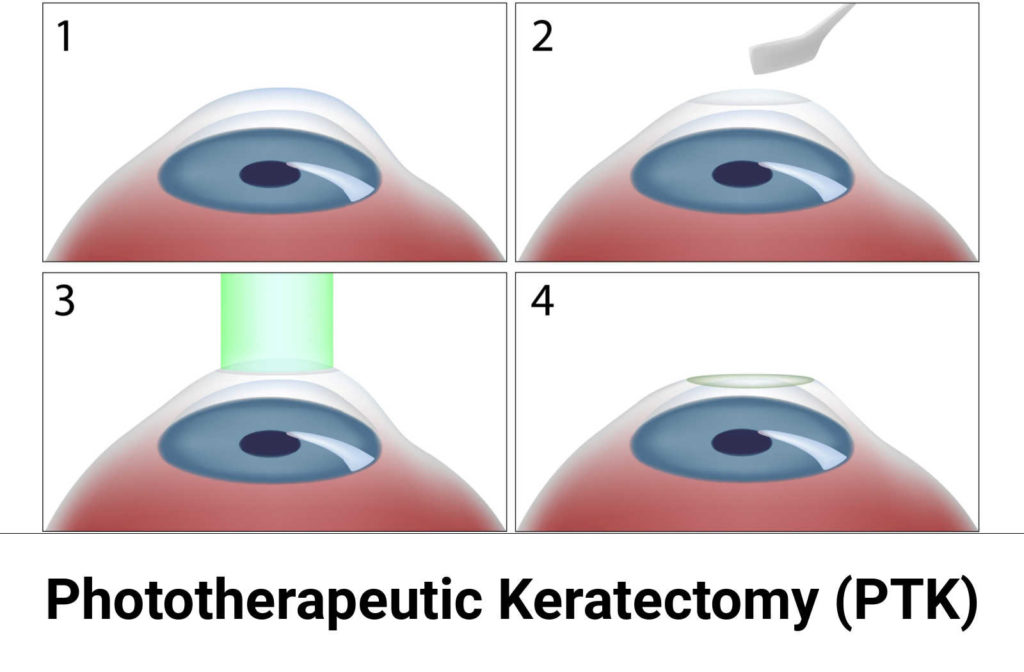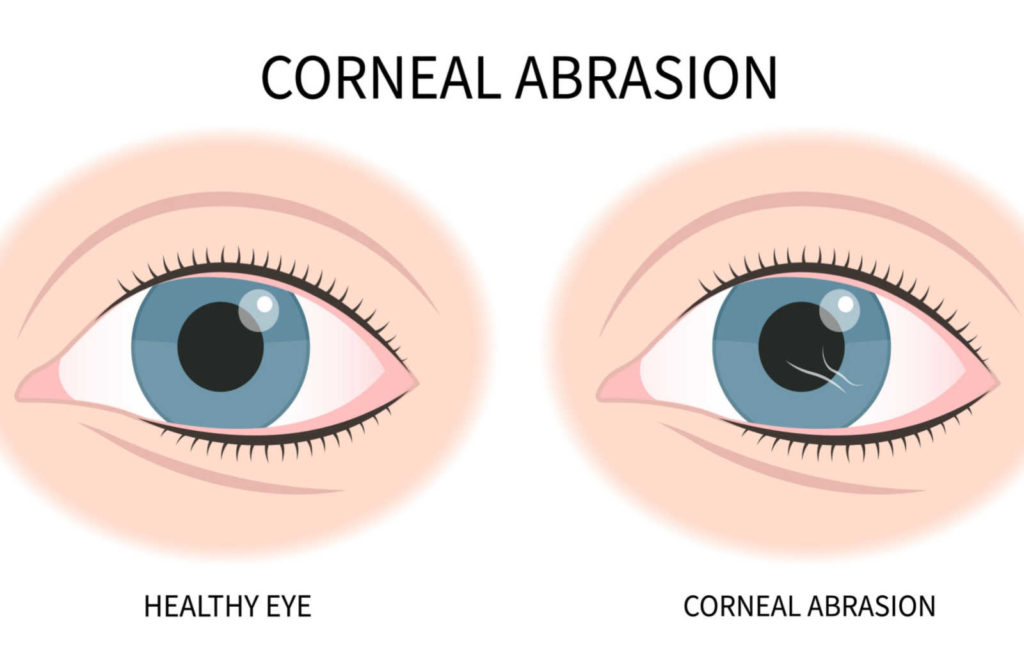Corneal abrasions are common eye injuries that occur when the clear outer layer of the eye is scratched or scraped. This can happen from a variety of sources, such as:
- Fingernails
- Tree branches
- Contact lenses
- Dust or other small particles
- Poorly attached skin/outer layer on the surface of the cornea
Are you suffering from a corneal abrasion that just won’t heal? You’re not alone, and there’s good news—there are several advanced treatment options available that can help you get back to your normal life.
These innovative treatments can effectively treat corneal abrasions, even those that are resistant to traditional treatment methods. These procedures may help to reduce pain, improve vision, and speed up healing time and prevent recurrence.
Symptoms & Treatment for Corneal Abrasions
If you’re wondering whether you’re experiencing a corneal abrasion, there are a few symptoms you can look out for.
Symptoms of a corneal abrasion include:
- Significant pain
- Redness
- Tearing
- Sensitivity to light
If you suspect you have a corneal abrasion, it’s important to see an eye doctor immediately. They will be able to diagnose the injury, and may do so by using a special dye and a microscope called a slit-lamp.
An ophthalmologist can play a critical role in the diagnosis and treatment of a corneal abrasion. Here are a few ways an eye doctor can help:
- Proper Diagnosis
- Medical and / or Surgical Treatment
- Pain management
- Follow up care
- Prevention tools
The treatment for a corneal abrasion depends on the size and location of the injury, but it usually involves the use of antibiotic eye drops or ointment to prevent infection and possibly patch to protect the eye or a bandage contact lens while it heals.
In most cases, a corneal abrasion will heal on its own within a few days, but in some cases, further treatment may be necessary as the cornea may continue to have recurrent abrasions and not completely heal. For these chronic presentations, corneal abrasions can be treated with:

Phototherapeutic Keratectomy (PTK)
A common use of PTK is for the treatment of recurrent corneal abrasions. PTK can be used to remove the damaged epithelium and smooth out any irregularity in the cornea, allowing the cornea to heal more quickly, effectively and completely..
Recovery time varies depending on the extent of the abrasion and the individual’s healing process, but typically patients can return to their normal activities in a week. They may experience temporary symptoms such as:
- Light sensitivity
- Glare
- Halos around lights
- Blurry vision
Superficial Keratectomy (SK)
Another treatment option for a recurrent corneal abrasion is a procedure called superficial keratectomy. This is a surgical procedure in which the damaged or abnormal tissue on the surface of the cornea is removed. The procedure is typically performed under local anaesthesia.
During the procedure, the surgeon will use a fine blade to remove the damaged tissue. The exposed area is then polished with a very fine diamond dusted burr. The healthy tissue can then grow back and cover the removed area. The procedure, as performed by a cornea specialist at Vector Eye Centre, takes only a few minutes.
Recovery time after a superficial keratectomy is usually just one week. Most patients can return to normal activities after a full week, but it may take several weeks for the new outer layer of the cornea to optimise.
Superficial Keratectomy is a safe, excellent and well researched treatment for recurrent corneal abrasions. It is reserved for cases where an abrasion doesn’t heal properly or the patient has recurrent corneal erosions.
Treat Corneal Abrasions at Vector Eye Centre
If you’re experiencing pain, redness, tearing, or sensitivity to light due to a corneal abrasion, don’t wait any longer to seek treatment. Contact Vector Eye Centre to discuss which treatment option will best suit your needs. Your eye health is important, and these advanced treatments can help you get back to your normal life as quickly as possible.



